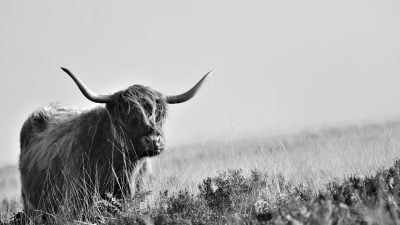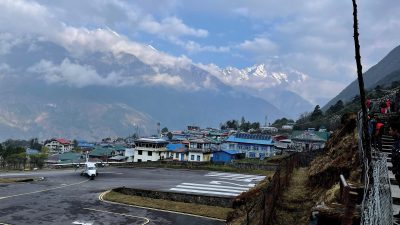Home / Latin America & Antarctica / Antarctica / Get to Know Antarctic Wildlife…
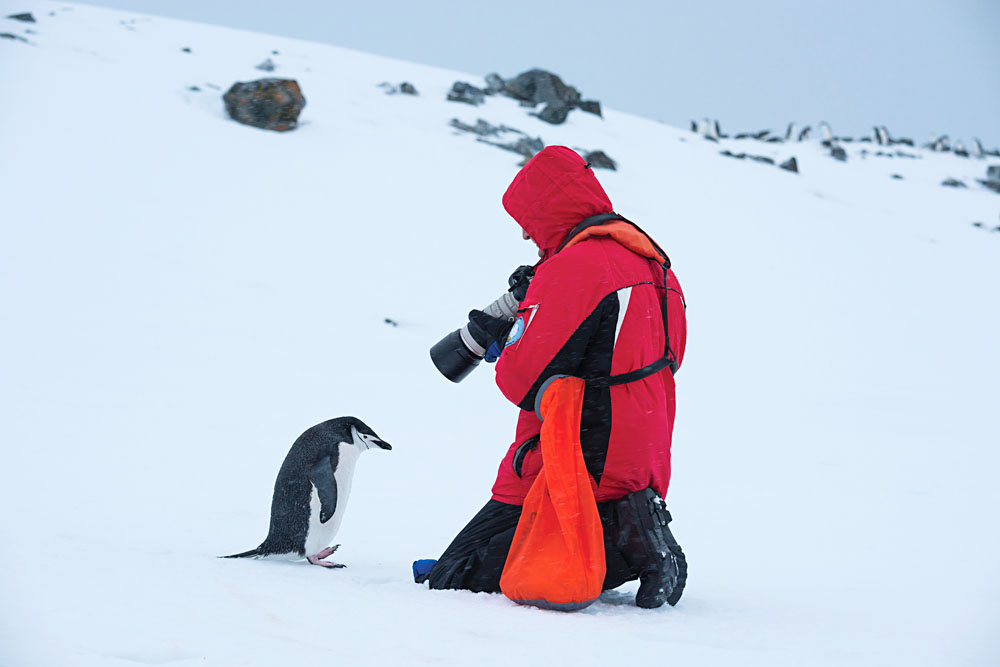
Get to Know Antarctic Wildlife Up Close
Antarctica is a place few people ever see, which is due to the fact that it’s the coldest, driest, and windiest place in the world. Temperatures go as low as minus 129 degrees Fahrenheit. Average precipitation is only a couple of inches a year, and 200 mph winds have been recorded along the coastline. In fact, Antarctica is officially considered a desert, but in the midst of all this extreme weather, a wealth of wildlife exists.
The Animals of Antarctica
The sea is often warmer than land, so most of the animals who call Antarctica home actually live in the water. There are no mammals, reptiles, or amphibians living in Antarctica. The continent experiences some vagrant birds and freshwater ducks in the South Georgia and Kerguelen areas, but not much more. Instead, visitors to Antarctica will see mostly penguins on the icy ground.
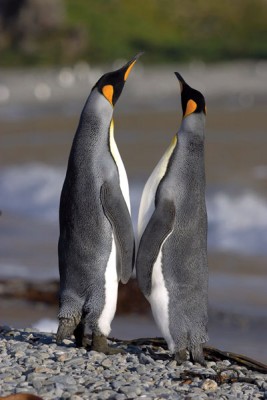
Penguins
Penguins seem to rule Antarctica and are often seen as an emblem of the continent. They live in colonies that often have populations larger than many cities, and are one of the few species able to survive the harsh Antarctic conditions. All in all, there are 17 different penguin species but only two make Antarctica home — the Emperor and the Adélie.
Emperor penguins are easy to spot. These penguins are almost four feet tall with gold patches on the top of their chests and ears, and this breed lives the farthest south of any other species. They are rarely seen in sub-Antarctic waters. In contrast, Adélie penguins have a white front and a black back and head, making them look like they are in a suit, and no gold highlights. These penguins are smaller than emperor penguins but are very prominent. There are more than 2.5 million pairs in Antarctica — and they are feisty. Adélies have been known to attack visiting scientists with their flippers.
The Chinstrap, Gentoo, Macaroni, Magellanic, and Rockhopper penguins call the northern tip of the Antarctic Peninsula home.
Whales
Whales are one of the two groups of marine mammals that live in the waters around Antarctica. These whales can be broadly categorized into two classes — toothed whales and baleen. Toothed whales have teeth, and they generally eat squid or fish. These whales vary in size from the enormous sperm whale (think Moby Dick) to porpoises and orca whales.
Baleen whales, or “Great Whales”, have flat, spade-shaped plates of baleen instead of teeth. These whales use their teeth to filter small fish and plankton from the water. Blue whales and humpback whales are baleen. You can tell the difference, as baleen whales are normally larger than toothed whales, with the notable exception of the sperm whale. Baleen whales have two blowholes, while toothed whales have only one.
Other Antarctic whale species include the minke and the Southern right whale, a species found only in the Southern Hemisphere.
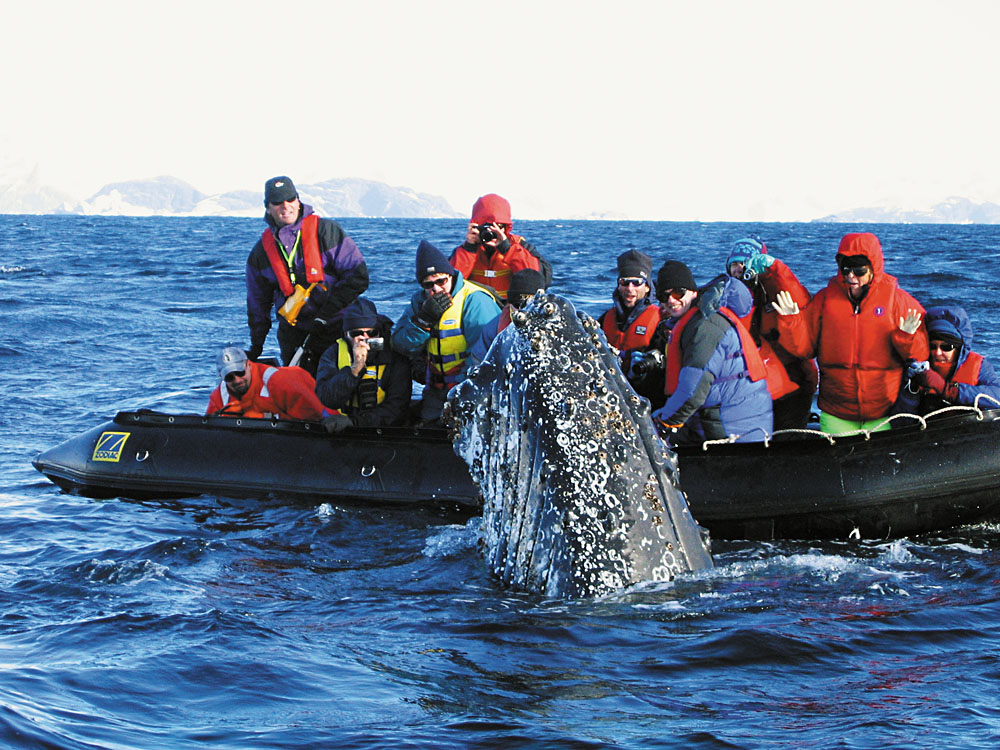
Seals
When you visit Antarctica, you may also encounter seals. Six species live in Antarctica, and of these, four have ice habitats and often breed on the sea ice in the springtime. Leopard seals and Ross seals are often spotted alone, while Weddell seals and Crabeater seals tend to stay in groups. You may also see Falkland seals and Elephant seals.
In general, there are two main types of seal — true seals, like those mentioned above, and eared seals, meaning that they have external ears. Eared seals include fur seals and sea-lions, and are usually found on the beaches north of the ice-pack areas.
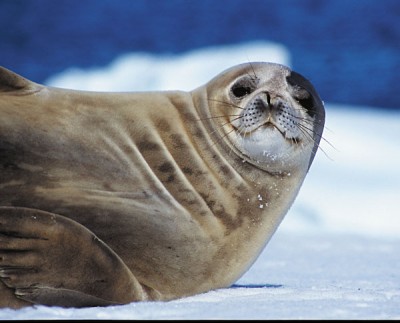
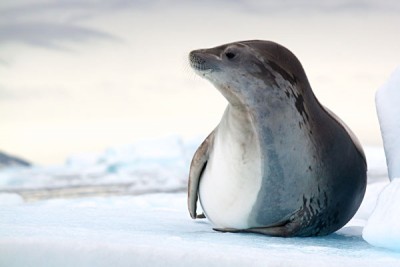
How You Can See the Wildlife
The wildlife in Antarctica is so plentiful and the people so sparse, you are sure to spot something during your trip. If seeing the Antarctic wildlife is your main goal, make sure you visit during January or February, which is the peak time for most wildlife activity. You may also opt to explore the continent on a cruise. Cruises are a great way to explore deeper waters, see some of the sights, and observe more wildlife as a group. You can see the seals hanging out on the sea ice, the penguins clustered in colonies, the sea lions lounging about, and whales surfacing for air.
For the more adventurous travellers, kayaking is the way to go. You get the chance to enjoy a close encounter with Antarctic wildlife and go places larger cruise boats simply can’t reach.
Antarctica: Cruises and Sailing
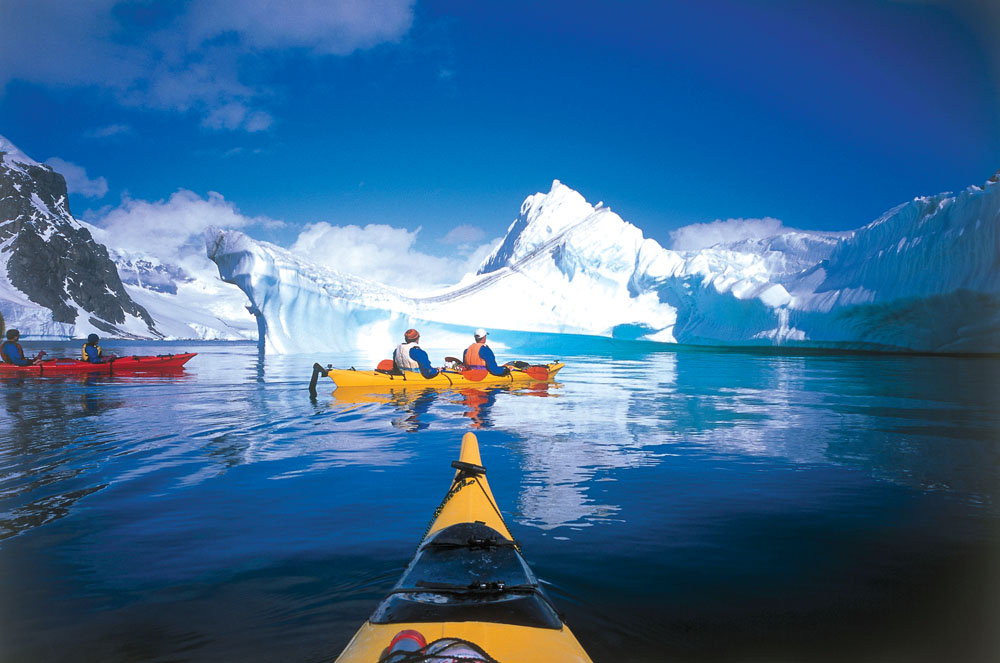
Travel Options
If you want a full Antarctica experience, take a cruise. You’ll depart from Buenos Aires, Argentina, travel through the Falklands, down through the South Georgia and Sandwich Islands, and finally reach the Antarctic Peninsula before you return to Argentina. While a great way to spend a few weeks, this cruise isn’t your only option. One of the best parts about a visit to Antarctica is that the continent is not as remote as it may feel. While you absolutely can choose Antarctic cruises that last as long as a few weeks or as short as a week, cruises aren’t the only way to travel.
You can also fly to Antarctica for the day, the night, or the weekend. The trip takes only two hours in the air to get from Punta Arenas in Chile to King George Island – the largest island in the South Shetland Islands, and just north of the Antarctic Peninsula. You could hop on a day cruise, rent a kayak, or fly one way and cruise the other.
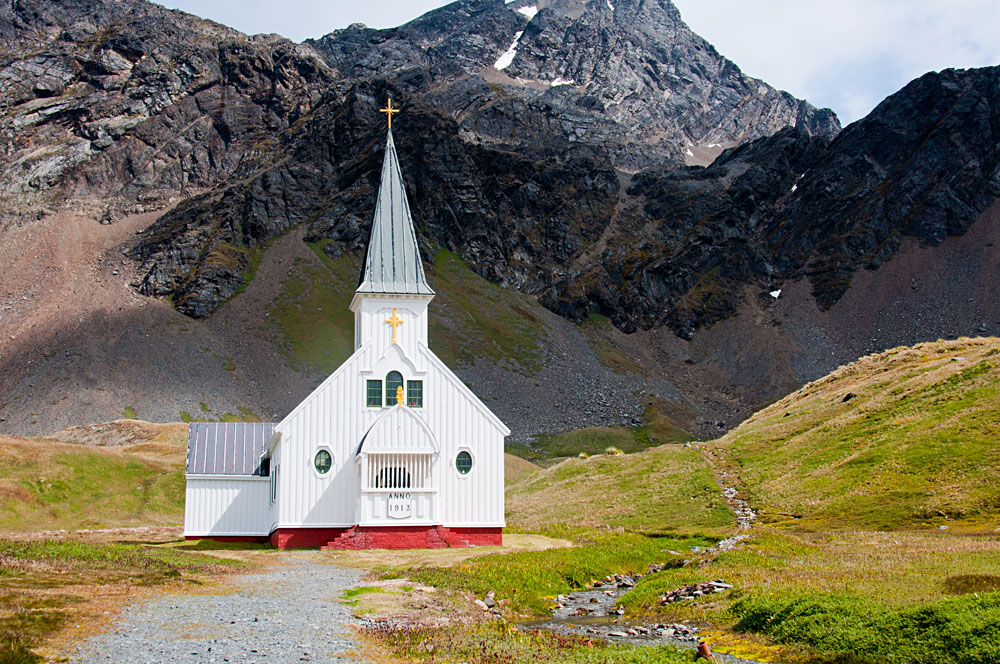
In Short
Antarctica is one once-in-a-lifetime experience that is more convenient than you might realize. Fly in for the day or cruise around for weeks, checking out the local wildlife. In Antarctica, you’ll see penguins frolicking, seals basking, and whales surfacing for air… all making for some truly wonderful memories.
Suggested Itineraries:
11-Day Antarctica Express (Departs from Punta Arenas)
22-Day Falklands, South Georgia, & Antarctica Explorer
3-Day Fly to Antarctica (2 or 3 days)
Antarctica: Nature and Wildlife
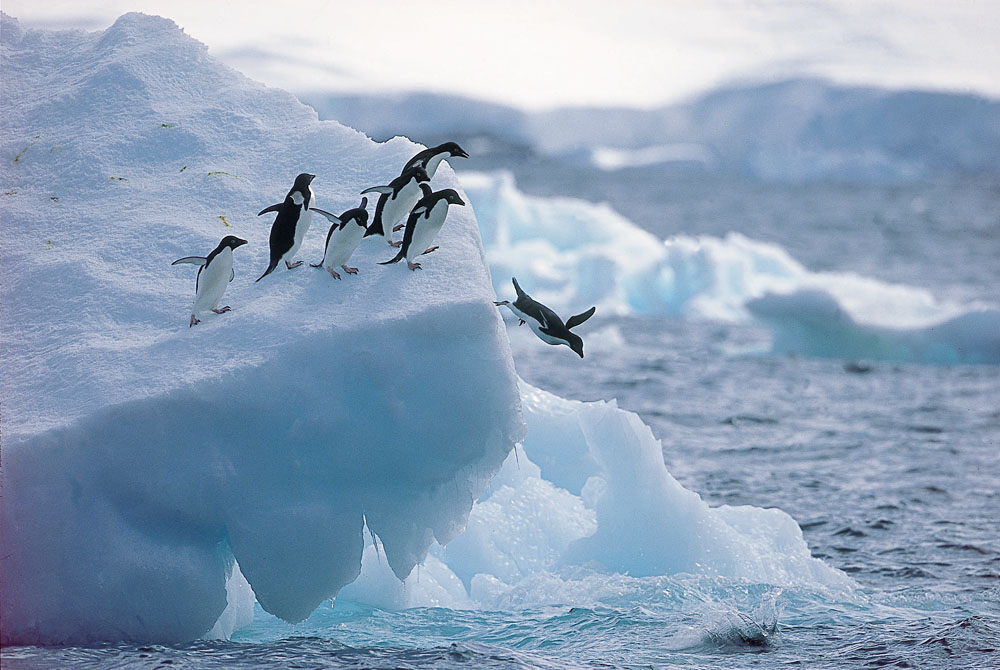
Get more travel inspiration by email.
Subscribe
0 Comments

Get the latest travel trends & hear about the best deals on vacations around the world.
If you’re a Globetrotter, these are the newsletters for you!
